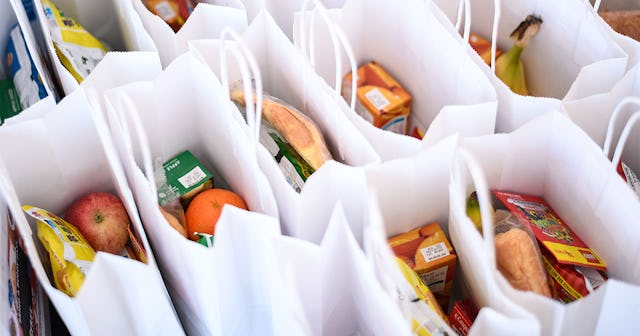Biden Admin Extends Free School Lunch Program Through 2022 School Year

The program was originally set to end this September
The United States Department of Agriculture announced this week it is extending universal free lunch program through the 2021-2022 school year. This will have a massive impact on the estimated 12 million youth experiencing food insecurity today.
“The waivers continue the Administration’s commitment to provide safe, healthy meals free of charge to children as the pandemic continues to threaten the food and nutrition security of our most vulnerable,” the announcement read. This is much-welcomed news for the millions of parents who lost their jobs or were furloughed as a result of the pandemic and have also had kids at home full-time distance learning and didn’t have access to school lunch programs.
“USDA will remain relentless in ensuring our nation’s children get the critical nutrition they need,” said Agriculture Secretary Tom Vilsack. “States and districts wanted waivers extended to plan for safe reopening in the fall. USDA answered the call to help America’s schools and childcare institutions serve high quality meals while being responsive to their local needs as children safely return to their regular routines. This action also increases the reimbursement rate to school meal operators so they can serve healthy foods to our kids. It’s a win-win for kids, parents and schools.”
The free lunch program is extended an entire school year.
Originally, the child nutrition waiver-based program was set to end on September 30, 2021. Now, administrators can proactively plan for the upcoming school year as uncertainty still exists with what exactly that will look like for students.
Both schools and child and adult care facilities can continue providing breakfasts, lunches, and after-school snacks and they can be given during flexible meal times. Parents or guardians can continue to pick up meals for their kids during the day when it is convenient for them during work hours. Many institutions still have drive-up services, so people can maintain social distancing.
“We are so appreciative [the USDA] made this announcement with so much lead time so schools can plan their programs” for 2021-22, Lisa Davis of hunger-fighting charity Share Our Strength told The Washington Post, adding that “last year there was uncertainty, and it was more chaotic than it needed to be.”
“The goal is to meet the nutrition standards where they can. We know this works — it’s evidence-based,” Stacy Dean, deputy undersecretary of the USDA, said, highlighting the Tufts University study that found American kids eat the most nutritionally adequate food when they are at school.
“Some kids rely on these programs for as many as three meals a day, underscoring how essential it is for USDA to empower schools and childcare centers to continue their dedicated efforts to serve healthy meals, safely,” the agency said.